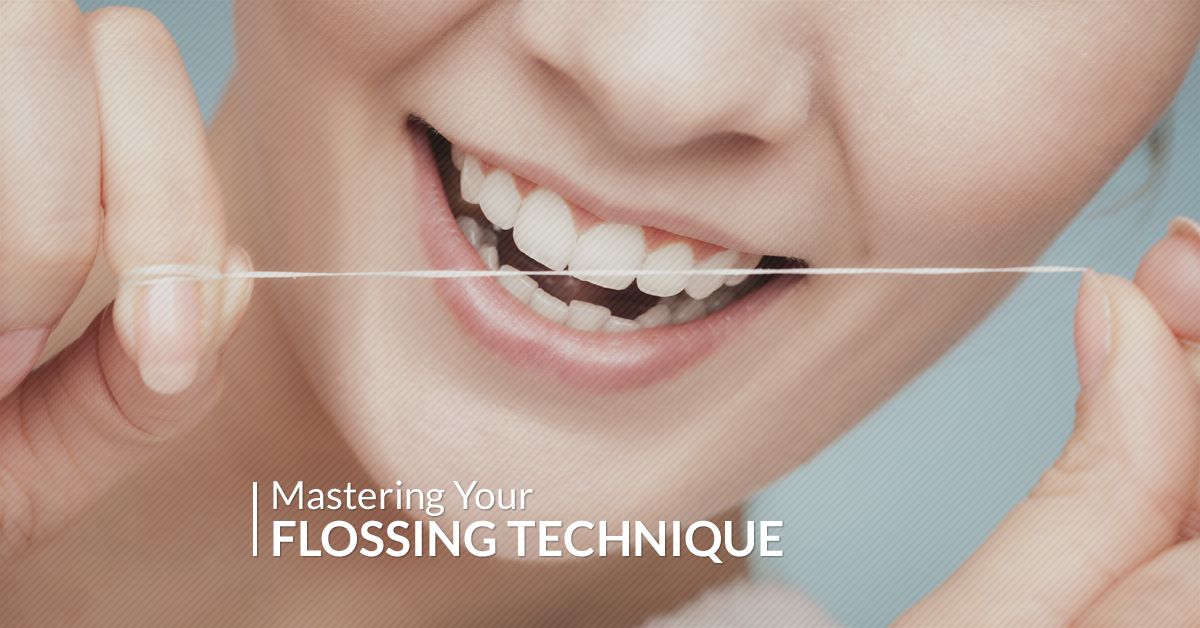We all know how important brushing our teeth is to our oral health, but today we’d like to discuss something that many people tend to neglect for the sake of a quick bedtime or morning routine: flossing! Although you may have flossed before, you might not know the proper technique to use while flossing and what methods work best for keeping your teeth and gums clean and strong. Read on to learn more from the professionals at Kruckman Family Dentistry!
Why Does Flossing Matter?
Flossing each day (at least once) is a wonderful way to get rid of the plaque and food bits that tend to get trapped in between your teeth that brushing alone cannot get rid of. By flossing every day, you significantly reduce your chances of developing gum disease and other gum problems. You also help get rid of your bad breath!
Schedule Your Appointment Today!
How Do I Floss?
Follow these steps and tips in order to floss effectively each day:
- Use a good dental floss. If you’ve ever gone through the dental hygiene section in a store, you probably have seen many different types of floss that you can choose from. There are waxed flosses, unwaxed, flavored, and unflavored. However, even with all of these choices, floss comes in two forms:
- Nylon floss – This floss is made from several strands of nylon fabric, which makes it stringy and fairly easy to break apart. This floss can come in waxed and unwaxed.
- PTFE floss – This floss is made from a single thread or strand. Because of how thin it is, it can easily glide between the tightest spaces.
- Keep in mind that some choices work better for others. If you have wide gaps in between your teeth, then tape floss or super floss are a good choice. PTFE floss is also usually a little more expensive, but it’s less likely to shred, and a container of PTFE floss will last for a very long time.
- Know how much to use. If you use floss that is too short, you’ll just end up with your fingers in your mouth and very little control over where the floss actually goes. Instead, use about 18 inches of floss each time. Wrap the ends around your middle fingers to give you better control.
- Grip the floss properly. Hold the floss between your thumbs and pointer fingers on both sides. There should be about 3 to 4 inches of floss exposed, which is plenty for cleaning your teeth.
- Control the floss. Make sure that you are gently sliding the floss in between your teeth. It doesn’t matter where you start, but it does matter that you are gentle so as not to harm your gums. You should bring the floss between your tooth and your gumline. Try to avoid snapping your floss into the gums; otherwise, you may be dealing with a lot of blood.
- Practice the C motion. After the floss is between your teeth, let it curve down around the bone and slide beneath the gum line. Once in place, carefully move the floss to reach each little contour of the tooth.
- Floss one tooth at a time. We know that flossing properly can be a tedious process, but if you try to floss more than one tooth at a time, you will be less precise and more likely to hurt your gums. Also, you will want to use a new section of the floss for each tooth.
- Rinse afterward. After you floss, you will have little particles that have been dislodged floating around your mouth. Rinsing with mouthwash or water can help you clean your mouth further and keep you feeling fresher than before.
- Consider other methods if you need. There are many tools that have been created to make flossing easier, including little floss holders or floss threaders. If you struggle with flossing the traditional way, then one of these alternatives may be the perfect choice.
Contact Us
If you have any questions about flossing or our dentistry services, be sure to give us a call! Schedule your appointment with Kruckman Family Dentistry today. We are proud to serve Waconia, as well as the residents of Victoria, St. Bonifacius, Mayer, Norwood Young America, and Cologne.

